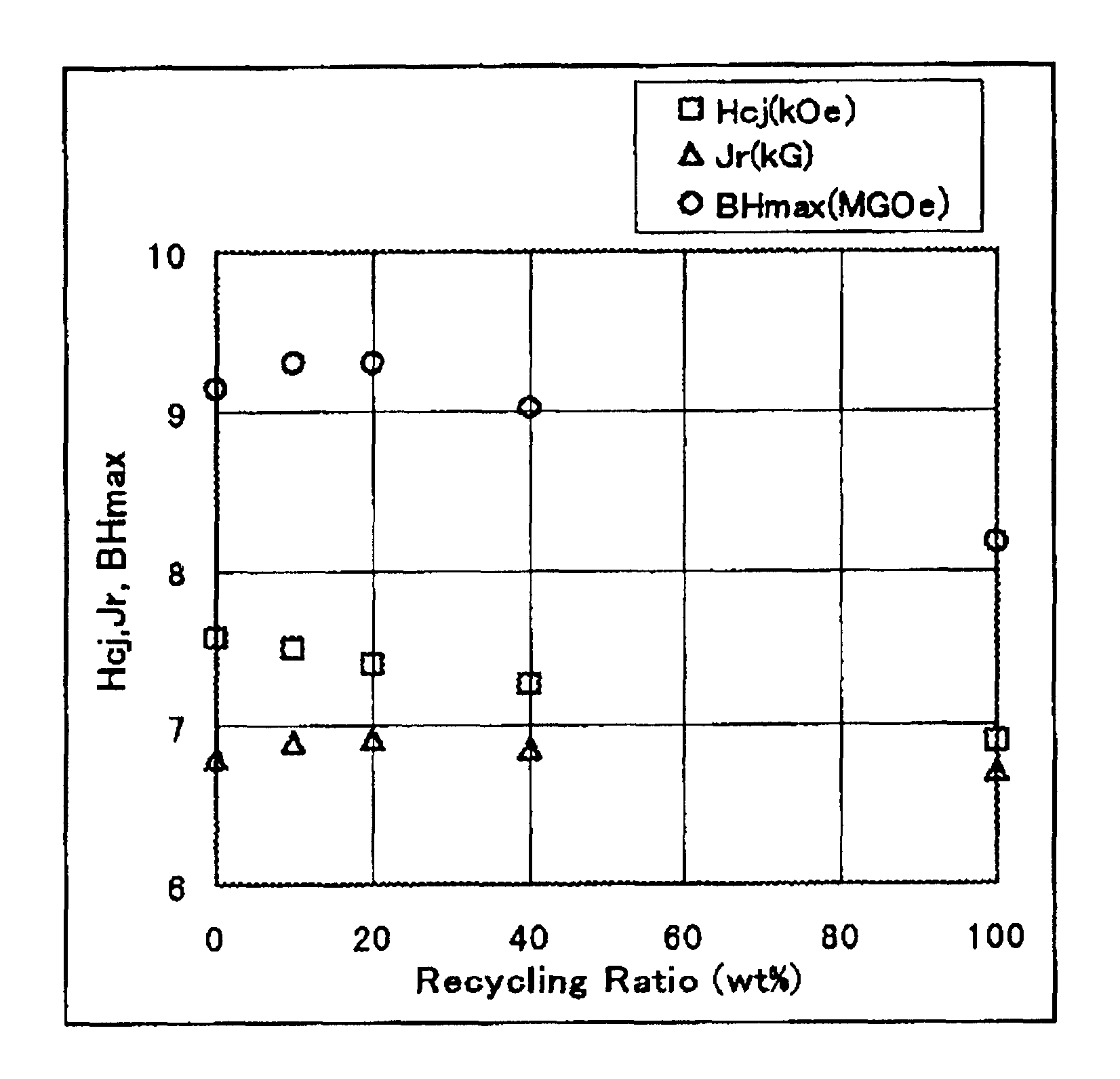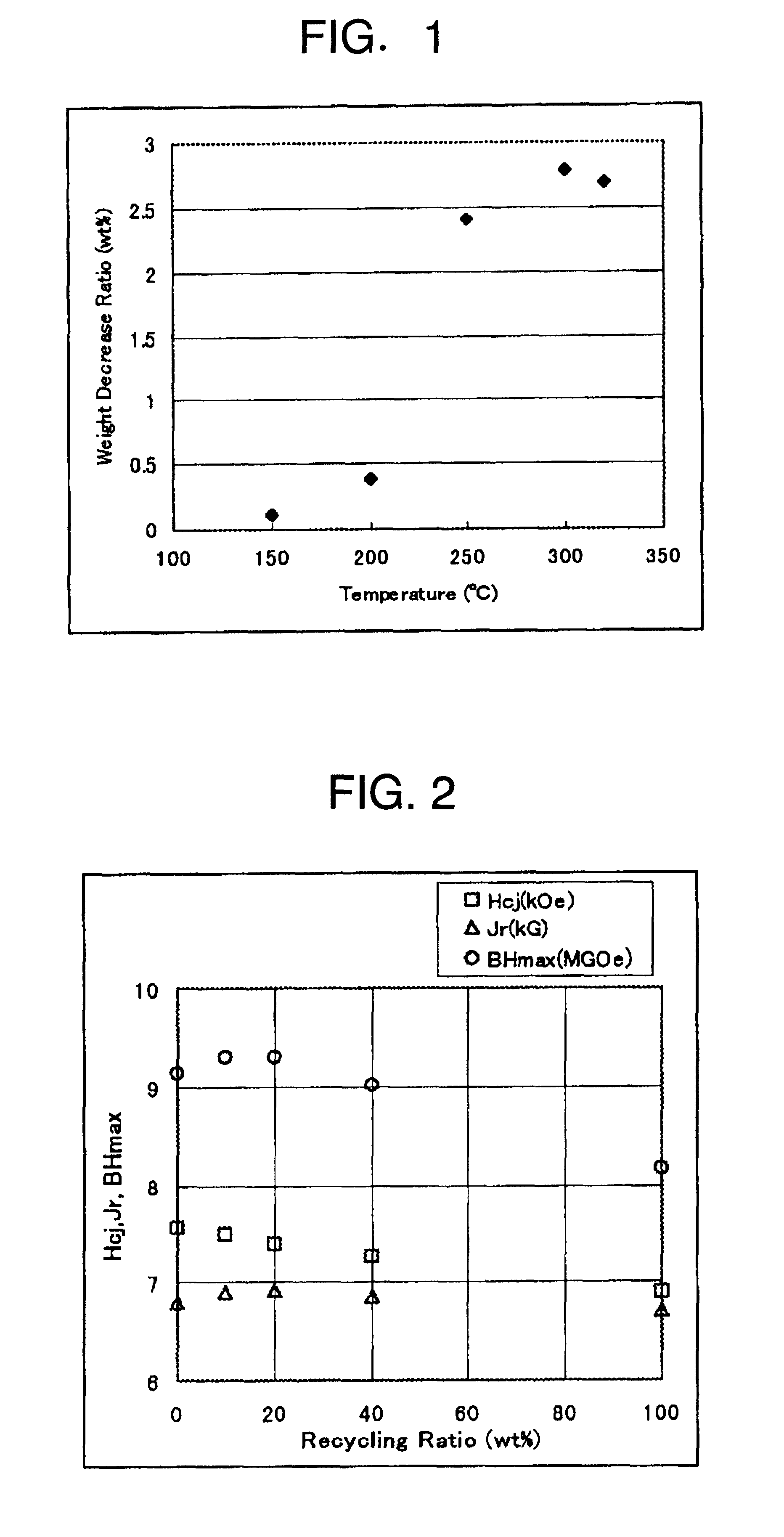Method of recovering and recycling magnetic powder from rare earth bond magnet
- Summary
- Abstract
- Description
- Claims
- Application Information
AI Technical Summary
Benefits of technology
Problems solved by technology
Method used
Image
Examples
example 2
First, after adding 100 ml of tetralin in a pressure vessel, 20 pieces of sample 1 of example 1 is placed into a fishnet basket suspended in the upper part of the pressure vessel. In this example, sample 1 is in a condition of not soaking in tetralin. Next, a vacuum pump is coupled to a nozzle of the pressure vessel and the pressure vessel is evacuated to not higher than 10.sup.-2 Torr. After the pressure vessel is heated to 300.degree. C. and undergoes decomposition treated for three hours, changes of the condition of the sample are observed. The treated sample is cleaned with acetone and dried, then its weight measured to determine a rate of weight decrease by the treatment.
Consequently, the sample keeps its cylindrical shape. However, the sample can be collapsed readily with tweezers, and is during acetone-cleaning. The rate of weight loss was 2.34%. Most of binder decomposes, and is removed from the sample by vapors of tetralin. According to the present example, it is understood...
example 3
Cylindrical Molding Production 2
92 parts by weight of exchange-spring magnetic powder made of Fe.sub.3 B / Nd.sub.2 Fe.sub.14, 8 parts by weight of 12-nylon powder, and 0.3 parts by weight of ethylenediamine derived wax are mixed and kneaded at 250.degree. C. by a single-spindle extruder with a screw diameter of 20 mm, and pellets are produced by hot-cutting plastic-magnet-molten-strand extruded from a die head.
The pellet produced above is pulverized. 0.5 grams of the pulverized powder is put in the metal mold heated at 200.degree. C., and compression-molded by applying a pressure of 500kg / cm.sup.2 to obtain a cylindrical molding (sample 2) with 5 mm diameter and 5 mm high.
The sample 2 is magnetized by pulses generating 50 kOe of magnetic field and has magnetic properties: 6.52 kG of residual magnetization Jr, 3.37 kOe of coercive force Hej and 5.31 MG.Oe of maximum energy product BH max by VSM measuring.
Decomposition Treatment
First, 20 pieces of sample 2 are put into a pressure vesse...
PUM
| Property | Measurement | Unit |
|---|---|---|
| Temperature | aaaaa | aaaaa |
| Pressure | aaaaa | aaaaa |
| Angle | aaaaa | aaaaa |
Abstract
Description
Claims
Application Information
 Login to View More
Login to View More - R&D
- Intellectual Property
- Life Sciences
- Materials
- Tech Scout
- Unparalleled Data Quality
- Higher Quality Content
- 60% Fewer Hallucinations
Browse by: Latest US Patents, China's latest patents, Technical Efficacy Thesaurus, Application Domain, Technology Topic, Popular Technical Reports.
© 2025 PatSnap. All rights reserved.Legal|Privacy policy|Modern Slavery Act Transparency Statement|Sitemap|About US| Contact US: help@patsnap.com


